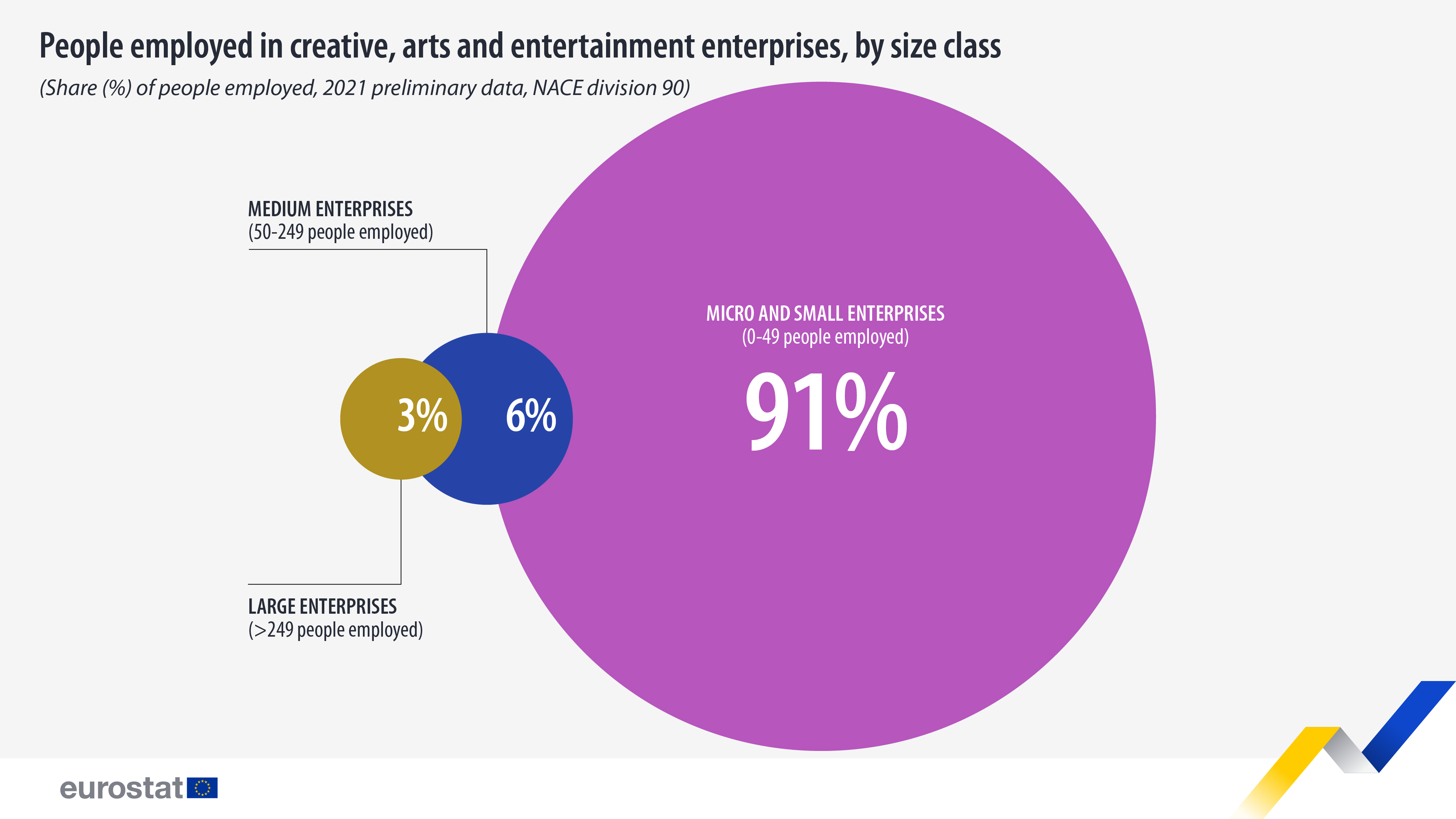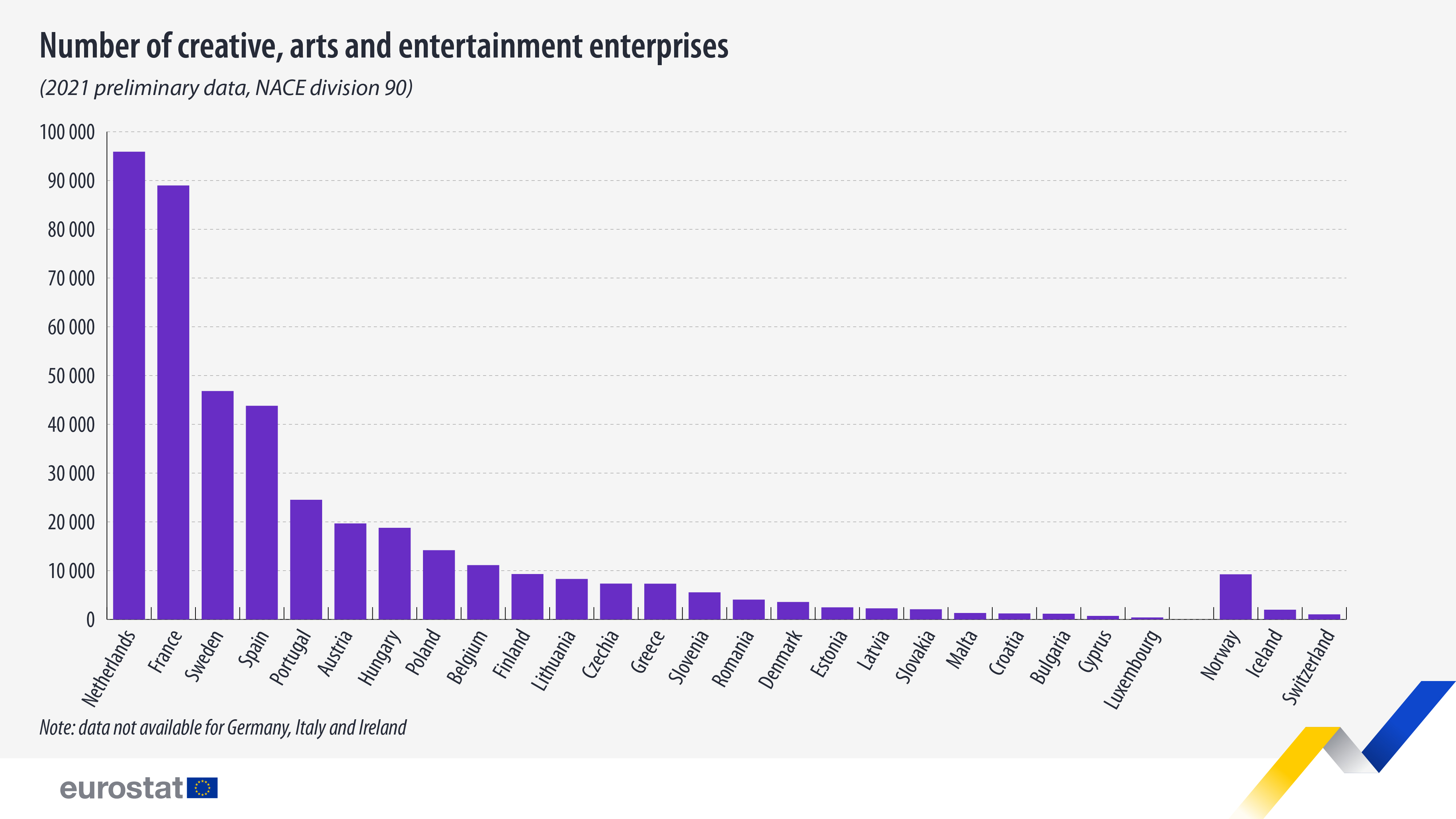Half a million arts & entertainment enterprises in the EU
It is estimated that in 2021, there were half a million active enterprises in creative, arts and entertainment activities in the EU, with an additional 12 000 involved in library, archive and museum activities. These, add to the 1.2 million enterprises in other culture-related economic activities (2020 data).
This information comes from preliminary data on Structural Business Statistics (SBS), which now offers wider and more complete coverage of the services sector.
Source dataset: sbs_sc_ovw
Enterprises in creative, arts and entertainment activities employed 582 000 people in 2021. The vast majority (91 %) were employed in micro or small enterprises (0 to 49 employees), 6% in medium enterprises (50 to 249 employees) and 3% in large enterprises (250 or more employees).
Looking at EU countries, the Netherlands had the highest number of creative, arts and entertainment enterprises, 95 902, followed by France (88 981), Sweden (46 825), Spain (43 796) and Portugal (24 533). The lowest numbers were registered in Luxembourg (398), Cyprus (711), Bulgaria (1 154), Croatia (1 217) and Malta (1 304).
Source dataset: sbs_sc_ovw
Advancing Structural Business Statistics
Structural Business Statistics already gave a comprehensive insight into the structure of the business sector, but this was improved by the introduction of new regulations on European Business Statistics, which includes new economic activities. Thanks to this, business statistics now cover two NACE divisions: division 90 for “creative, arts and entertainment activities” and 91 for “libraries, archives, museums and other cultural activities”.
Furthermore, preliminary Structural Business Statistics on three key variables (number of enterprises, employment, turnover) are published about a year after the end of the reference period. The preliminary release also includes the breakdown by enterprise size class, allowing users to carry out analysis for different kinds of enterprises and, in particular, for Small and Medium-Sized Enterprises (SMEs).
With the final release, about 20 months following the end of the reference year, the detailed economic activities at 4 digits of the NACE classification are published, including the newly available class 8552 on cultural education.
For more information
Methodological notes
- The final release of 2021 data, including the total aggregate for the cultural sector, will be available in October.
- New regulation: European Business Statistics Regulation 2019/2152 and the General Implementing Regulation (EU) 2020/1197.
If you have any queries, please visit our contact us page.


